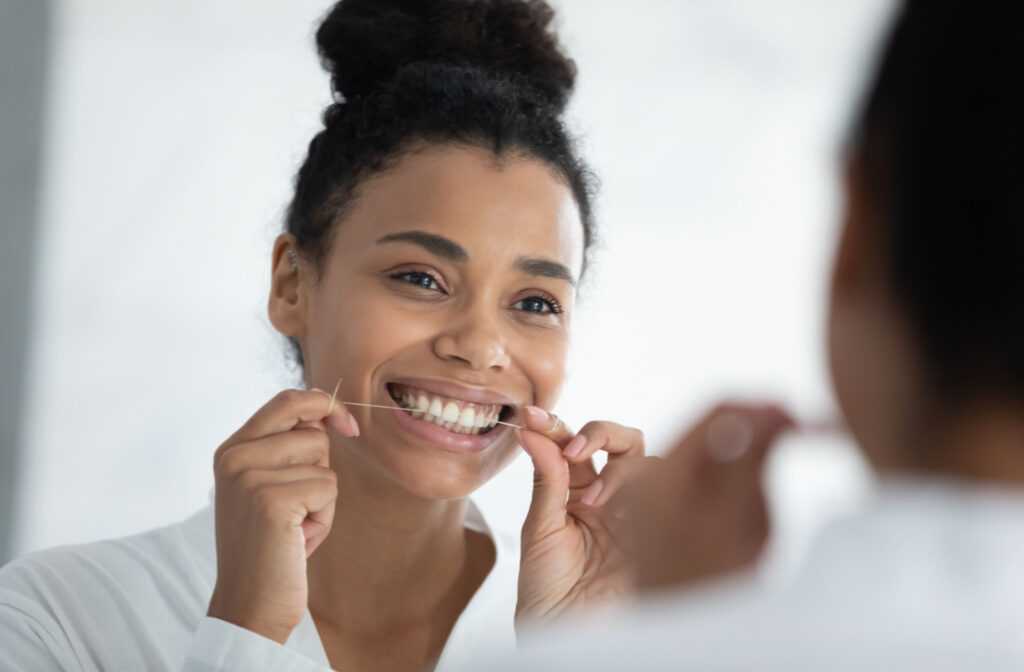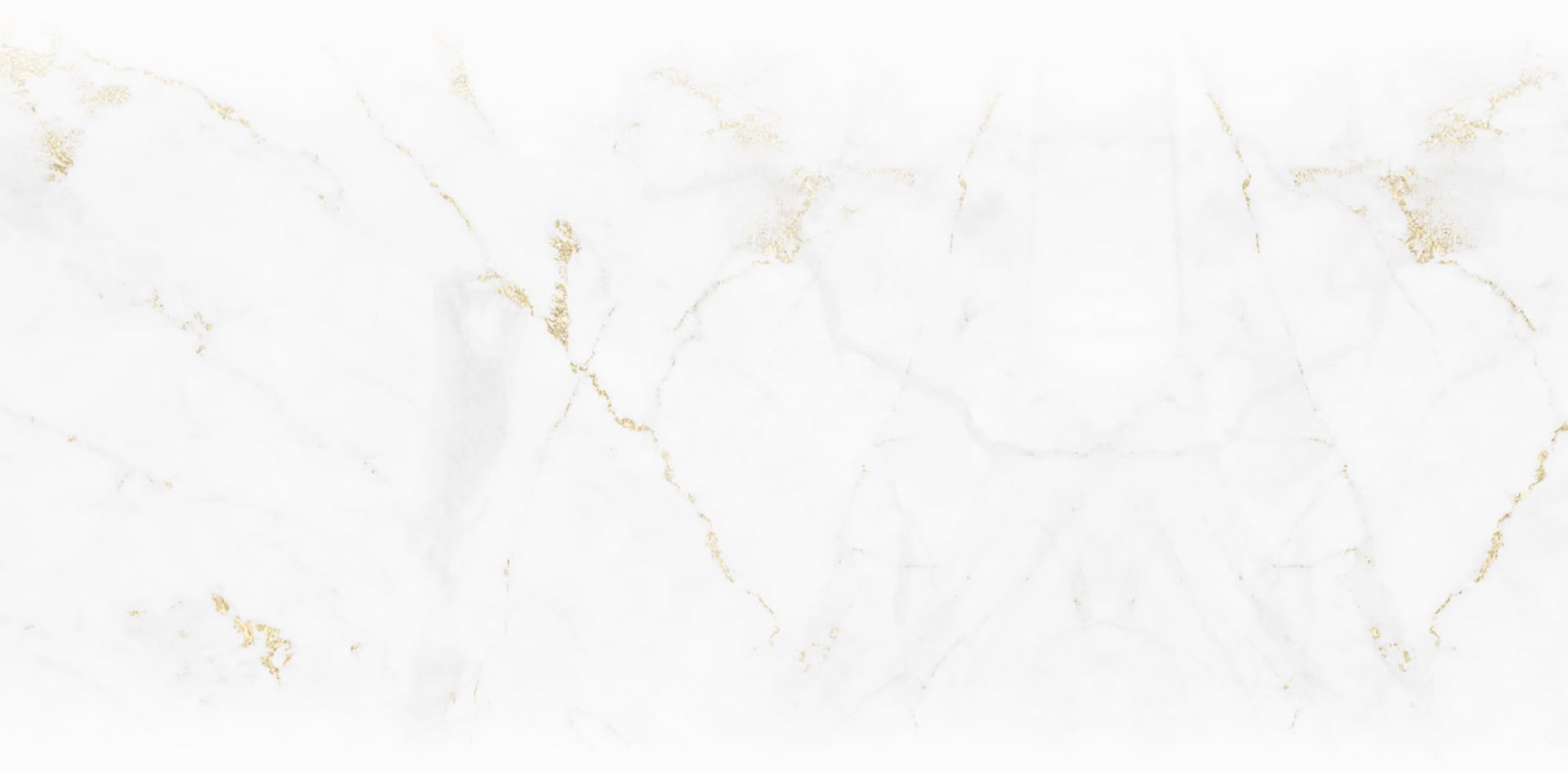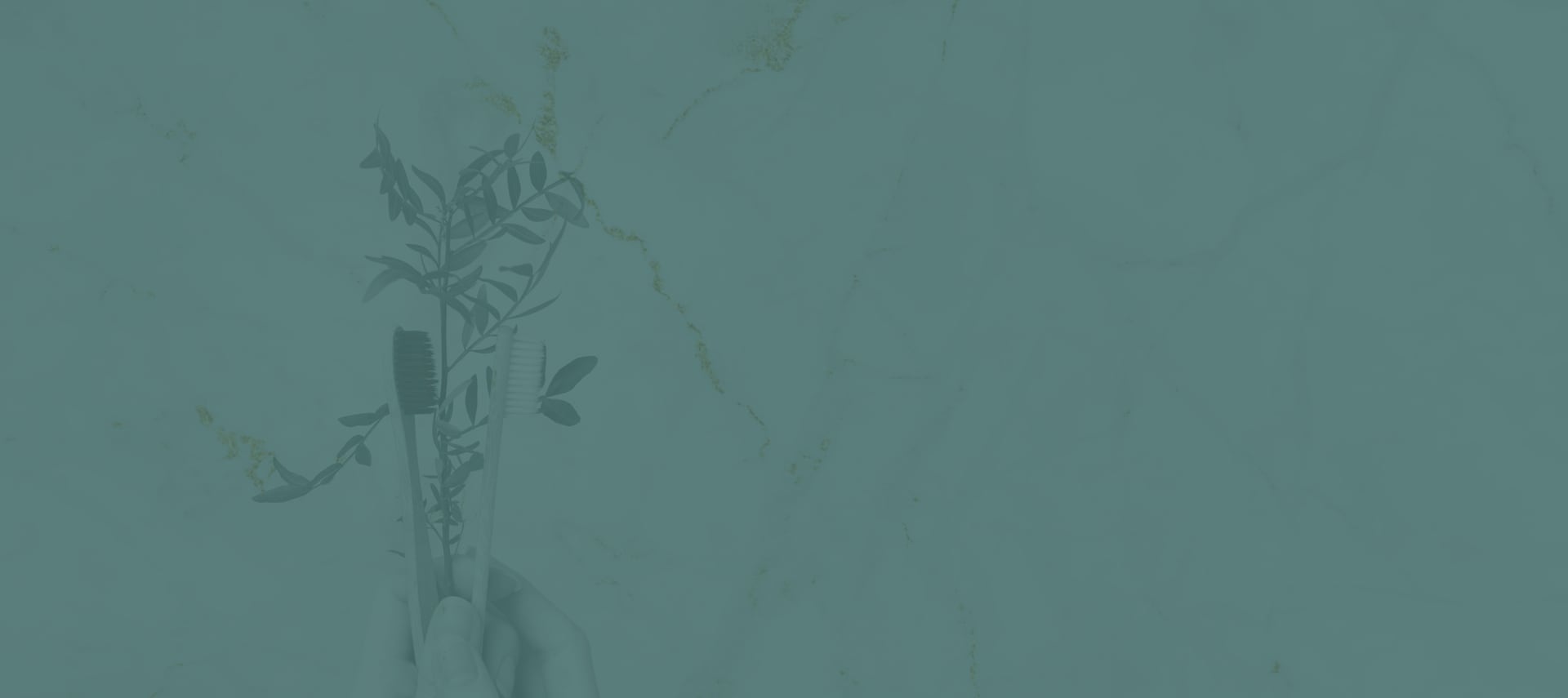Whether you are a diligent daily flosser or someone who forgets to floss for weeks at a time, there is a lot of confusion surrounding the proper flossing routine. How often should you floss? Once a day? Twice a day? Every other day? With so many different opinions, it is no wonder people are perplexed.
Ideally flossing should be part of your daily routine! However, sometimes every other day is adequate if your technique is meticulous and your routine involves thorough daily brushing twice with an electric brush. During your dental cleaning, your dentist and hygienist can make a personalized recommendation based on your unique oral health conditions.
Why Do You Need to Floss?
Brushing your teeth removes plaque and bacteria from the surface of your teeth, but it does not always reach the gaps between your teeth. As plaque and tartar build up between the teeth, bacteria produce acids that can invade and weaken your enamel and also cause gingival irritation.
Flossing is the only way to clean these hard-to-reach areas and prevent the build-up of plaque, which can lead to cavities and tooth decay. If plaque and tartar collect along the gum line, you can develop gingivitis and gum disease.
Do You Need to Floss Every Day?
The Canadian Dental Association recommends flossing at least once a day to help maintain good oral health. Daily flossing helps remove any food particles and plaque build-up between the teeth. However, flossing every other day can still adequately remove plaque if you brush correctly with an electric toothbrush.
Unlike manual brushing, electric brush heads can rotate and vibrate, allowing for unique movement patterns. They have several benefits for your oral health, including:
- Effective plaque removal
- Built-in timers
- Safe for gums
If you are using an electric toothbrush and brushing your teeth thoroughly twice a day, every other day flossing should be sufficient.
Some people may experience bleeding gums while flossing, which could lead you to avoid flossing, but bleeding gums can be a sign to increase your flossing routine. Flossing daily can help remove plaque build-up on your gums, preventing inflammation that leads to bleeding. If your bleeding gums are a concern, please schedule an appointment with your dentist.
Flossing Options
There are several flossing options in addition to standard floss. For those with small jaws, mobility issues, and other barriers to traditional flossing, alternative flossing tools can help make this task more comfortable and practical.
Traditional Flossing
Traditional flossing involves wrapping a string of floss around your fingers and using it to clean between your teeth and gums. Although effective, many people find traditional flossing difficult and uncomfortable. However, there are some tips that you can follow to make it easier:
- Use a generous amount of floss (about 18 inches) to wrap around your fingers
- Use gentle back-and-forth motions to avoid injuring your gums
- Do not snap the floss between your teeth
Flossing Picks
Flossing picks are disposable wands with a small piece of floss on the end. They are easy to use and do not require you to wrap the floss around your fingers. To use a flossing pick:
- Hold the pick with one hand
- Guide the floss between your teeth with the other hand
- Use a back-and-forth motion to clean between your teeth and gums
Typically, floss picks are made of plastic, but there are eco-friendly versions made of sustainable materials to reduce plastic waste.
Water Flossers
A water flosser, also called an oral irrigator, uses a pressure stream of water to clean between your teeth and along your gum line. They can be especially effective for people with braces or other orthodontic appliances and mimic your hygienist’s tools to clean your teeth. To use a water flosser:
- Fill the reservoir with warm water
- Point the nozzle at your gum line and turn on the machine
- Guide the nozzle along your gum line and between your teeth
Interdental Brushes
Interdental brushes are small brushes with tiny bristles that can clean between your teeth and along your gum line. They come in different sizes to fit the spaces between your teeth. To use an interdental brush:
- Choose the appropriate size for your teeth
- Insert the brush between your teeth
- Use a back-and-forth motion to clean between your teeth and gums
Those flossing with braces can have an easier time using an interdental brush between the brackets than traditional flossing.
Air Flossers
Air flossers use air and water to remove plaque and food particles from between your teeth. They are easy to use and do not require touching your teeth or gums. To use an air flosser:
- Fill the reservoir with warm water
- Point the nozzle between your teeth
- Press the button to release a burst of air and water
Schedule Your Next Dental Cleaning
Flossing is crucial to maintaining good oral hygiene. If you can floss daily as part of your routine, it can significantly benefit your teeth and gums, but if you brush thoroughly twice daily, flossing every other day can be enough.
Visit your dental team at Kensington Dental Care every 6 months for a professional cleaning and exam to support a healthy mouth. Your dentist and hygienist can determine how frequently you should be flossing and identify areas you may be missing.










